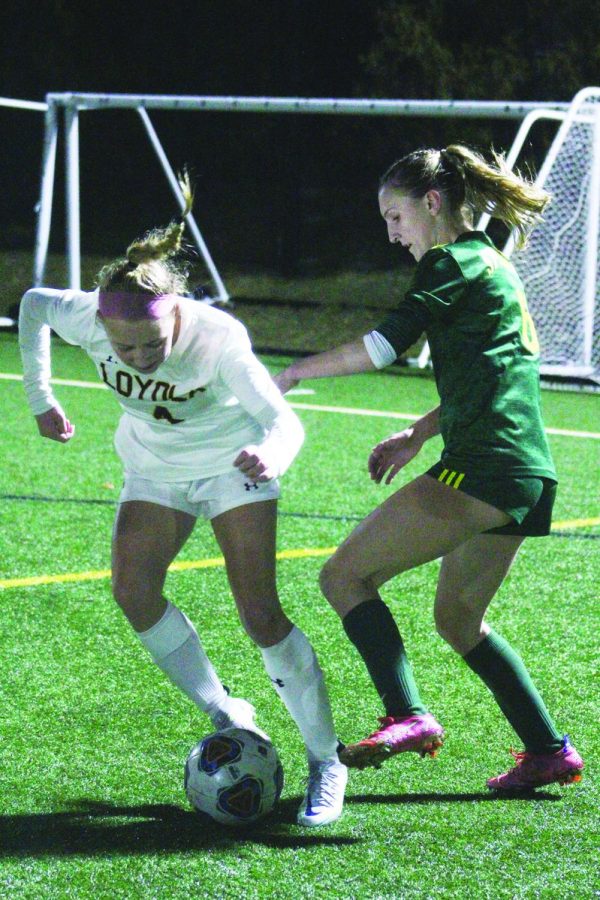Turf poses positives and negatives
During warmups for the second game of last year’s soccer season, senior Ashley Lebovitz approached the ball to take a shot with her left foot. As she took the shot, her right foot got caught in the turf.
“My knee just kind of went forward, and I couldn’t move it,” said Lebovitz. “I just heard a pop and a crack and found out that I tore [my ACL].”
According to Dr. Roch Gaussoin, extension turfgrass specialist at the University of Nebraska–Lincoln, turf does not have as much give, so the turf will grab a leg or cleat more on a turf surface than a grass surface.
“When you push into the soil of natural grass, the cleat or foot will flex into the grass, and the grass is less likely to catch on the cleat or foot,” said Gaussoin. “Whereas the artificial turf, because it’s a fiber and knitted together like a carpet, won’t give as much as natural grass, and so the foot stops quickly rather than having a little bit of flex to it.”
According to Dr. Steven Levin, orthopedic surgeon at NorthShore University HealthSystem, the give of the cleat is unforgiving, which causes it to get stuck in the turf, putting more strain on the lower extremities and making them more prone to injuries.
Turf burn is another injury that can occur on an artificial surface, which can open up the skin and allow bacteria to enter the bloodstream.
MRSA is a bacteria that can get trapped in the rubber of the turf, while natural grass can filter it out, Levin said.
According to head athletic trainer Ryan Moran, the cause of injuries on turf and grass at Glenbrook North is hard to determine because higher-contact sports such as football, lacrosse and soccer usually take place on turf.
“Turf, for the most part, is positive,” said Moran. “It allows [students] to continue to compete, practice and play in any type of weather.”
According to Levin, athletes cannot do much to prevent injuries caused by turf, but new cleats are being developed that do not get stuck in turf as often.
“People go to turf for economic reasons,” said Levin. “There’s obviously much less upkeep [than natural grass], and once they put it in, it’s just there forever.”
According to Lebovitz, she prefers turf over grass because it has fewer inconsistencies, like ditches, and turf makes it easier to run overall.
“It’s important to get used to [the turf] before you play on it,” said Lebovitz. “So maybe just before [playing on turf], go kick the ball around for a bit and just be aware of the terrain and just how different it is from grass.”


